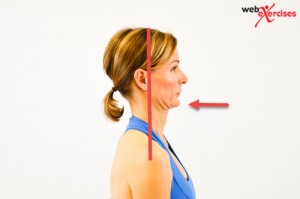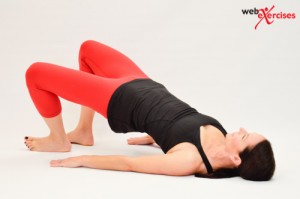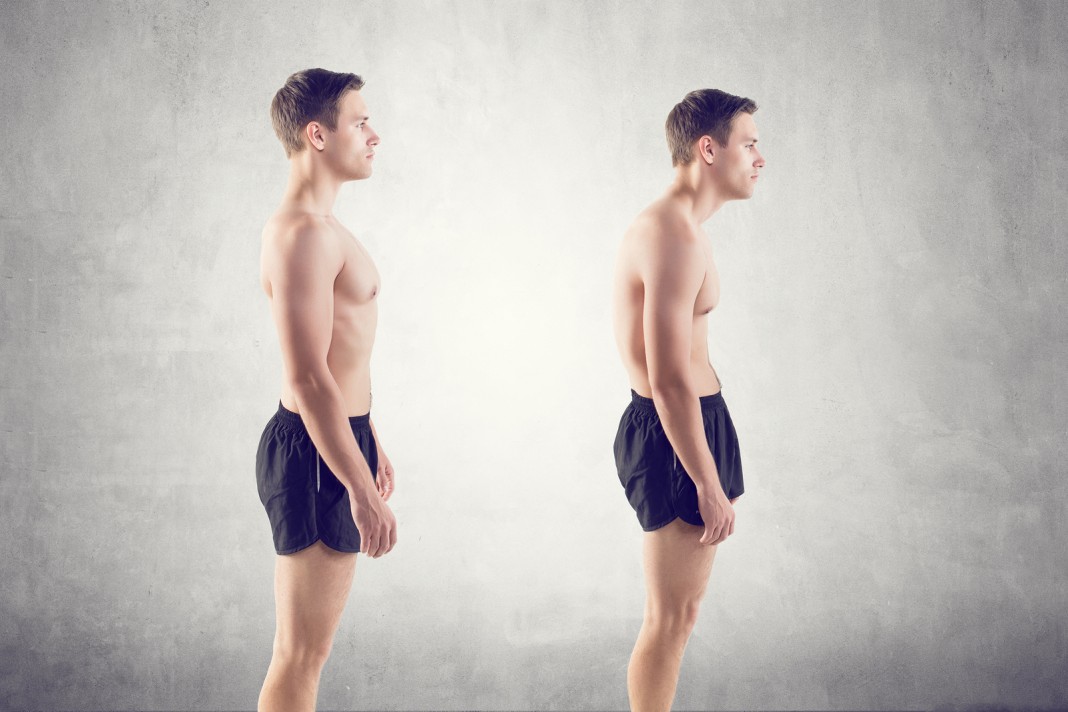We all know that our patients are doing good things for their bodies while we are with them, but probably not during the other hours of the week. Especially the prolonged time they potentially spend sitting which is no considered detrimental to their health. As healthcare professionals we see the effects of this everyday in the form of poor posture however we continue to overlook it as something benign that naturally occurs over time without consequence. According to the American Journal of Pain Management “Posture effects and moderates every physiological function from breathing to hormonal production. Spinal pain, headache, mood, blood pressure, pulse, and lung capacity are among the functions most easily influenced by posture.” (1) There is also evidence that poor thoracic posture shows “a trend towards greater mortality” as discussed in a study by the Journal of the American Geriatrics Society. (2)
Another fairly new risk factor that is starting to become more common is excessive usage of mobile phones, tablets and PCs. Over the past seven years mobile device usage has grown from .3 hours a day to 2.8 hours a day for the average adult. Comparatively our computer use has remained about the same over the same time period at 2.4 hours per day. (3) A recent article by Kenneth Hansraj, MD the chief of Spine Surgery at New York Spine Surgery and Rehabilitation describes that as the head tilts forward its weight effectively goes from 10 to 12 pounds in the neutral position to as much as 60 pounds at 60 degrees of flexion, which is the typical position that we have while using a mobile device. (4)
Over time this forward head position leads to ligamentous creep deformation having lasting neurophysiological effects. This was demonstrated with a feline study that found the creep deformation that occurred over the first 30 minutes did not recover with 10 minutes of rest and was present up to seven hours later. (5)
The other finding of this research was even more alarming: the primary risk factor was not the load but rather the duration of the load. The implication of this is concerning given we spend an average of 2.8 hours a day using our mobile device.
In addition to the ligamentous deformation, muscle adaptations occur resulting in the ‘Upper Cross Syndrome’ as described by Janda. The UCS is characterized by tightness of the upper trapezius, levator scapula and pectoral muscles along with weakness of the deep cervical flexors and middle to lower trapezius muscles.
As these postural changes occur with the neck and upper body, our lower body becomes susceptible to adaptions as well. These include weakened back muscles as evident in a study by Sanches-Zuriaga that found a decrease in low back muscle activation after soft tissue creep, suggesting that prolonged or repeated flexion could increase the risk of injury. (6) These findings support the fact that prolonged sitting should be interrupted with breaks in order to decrease this risk along with exercise intervention.
For the purpose of this article the focus will be on the Active Subsystem (spinal muscles) as described by Panjabi in his spinal stability system model. The following five exercises can be used for most clients requiring minimal time and no equipment. These exercises will not only help with preventing the above-described deformation and adaptation risks, but also encourage clients to stand up regularly and perform mini exercise breaks throughout the day.
We will start with the forward head posture as described by Harman and colleagues who found that this position is associated with weakness of the deep cervical flexor and mid thoracic scapular retraction muscles. (7) Additionally, shortening of the opposing cervical extensors and pectoral muscles was also noted. A combination of strengthening exercises for the deep cervical flexors and scapular retraction muscles coupled with stretching of the cervical extensor and pectoral muscles was performed for 10 weeks. The findings of the study demonstrated that a short, home-based targeted exercise program can improve the postural alignment related to forward head posture.
Based on the above findings the following three upper body exercises are suggested given they are ‘low-barrier’ homework for clients that they can perform daily without any equipment.
As described earlier, prolonged sitting and its effect on posture is not limited to the upper body alone but also affects the lower body. Tightness of the hip flexors along with an inhibition of the extensor muscles can lead to an aberrant motor pattern know as “gluteal amnesia” according to McGill. (8) He recommends exercises to enhance gluteal muscle function to unload the back in additional to hip flexor mobility with specific psoas muscle targeting.
Based on the above findings the following three upper body exercises are suggested given they are ‘low-barrier’ homework for clients that they can perform daily without any equipment:
Head Retraction
 Begin seated, or standing, looking forward with shoulders back with good neutral posture. Activate core muscles. Attempt to draw head directly backwards. Maintain level head position. Do not tilt head up or down. Hold for two seconds. Return to start position. Beginners should start with 3 sets of 10 repetitions.
Begin seated, or standing, looking forward with shoulders back with good neutral posture. Activate core muscles. Attempt to draw head directly backwards. Maintain level head position. Do not tilt head up or down. Hold for two seconds. Return to start position. Beginners should start with 3 sets of 10 repetitions.
Shoulder Retraction
Begin standing in good posture. Shoulders should be back and head up. Bend elbows to  90 degrees and keep elbows near sides. While maintaining good posture, draw shoulders back squeezing shoulder blades together. A stretch may be felt in the chest and front of shoulder. Do not allow shoulders to raise upward. Hold for 5-10 seconds. Beginners should start with 3 sets of 5 repetitions.
90 degrees and keep elbows near sides. While maintaining good posture, draw shoulders back squeezing shoulder blades together. A stretch may be felt in the chest and front of shoulder. Do not allow shoulders to raise upward. Hold for 5-10 seconds. Beginners should start with 3 sets of 5 repetitions.
Doorway Chest Stretch
Place forearm on wall, or doorway, with elbow bent at 90º. Elbows should be slightly
 below shoulder level. While maintaining forearm contact, lean body into doorway until gentle stretch is felt in the chest and shoulder. Hold for 20-30 seconds. Beginners should start with 3 repetitions on each side.
below shoulder level. While maintaining forearm contact, lean body into doorway until gentle stretch is felt in the chest and shoulder. Hold for 20-30 seconds. Beginners should start with 3 repetitions on each side.
As described earlier, prolonged sitting and its effect on posture is not limited to the upper body alone but also affects the lower body. Tightness of the hip flexors along with an inhibition of the extensor muscles can lead to an aberrant motor pattern know as “gluteal amnesia” according to McGill. (8) He recommends exercises to enhance gluteal muscle function to unload the back in additional to hip flexor mobility with specific psoas muscle targeting.
Here two very effective and easy to perform exercises that clients can do during short exercise breaks throughout the day:
Standing Hip Flexor Stretch
Begin standing in front of a chair about 18 inches away. Place one foot flat on the chair  seat. Slowly allow hips to glide slightly forward until a gentle stretch is felt on the front of straight leg. Hold for 20-30 seconds. Beginners should aim for 3 sets each on each side.
seat. Slowly allow hips to glide slightly forward until a gentle stretch is felt on the front of straight leg. Hold for 20-30 seconds. Beginners should aim for 3 sets each on each side.
Glute Hip Bridge
Begin lying on floor, facing up. Bend knees so feet are firmly on floor and arms extended
 to sides. Activate core muscles. Lift hips off floor to attain a bridge position with knees, hips, and shoulders in alignment. Slowly return to start position. Repeat for prescribed repetitions and sets. Initially, you may develop some cramping in the back of the thigh. A simple hamstring stretch, before and after, may prevent this from occurring. Beginners should aim for 3 sets.
to sides. Activate core muscles. Lift hips off floor to attain a bridge position with knees, hips, and shoulders in alignment. Slowly return to start position. Repeat for prescribed repetitions and sets. Initially, you may develop some cramping in the back of the thigh. A simple hamstring stretch, before and after, may prevent this from occurring. Beginners should aim for 3 sets.
All of the above displayed exercises are easy to execute and include minimal risks if performed as prescribed. Most important here is the regular execution and mid- to long-term adherence to the program. A calendar that reminds clients of the exercises and allows them to check off performed sets and reps could be a nice motivation for them and helps you track their compliance.
 Dr. David Cruz practiced as a sports chiropractor for 18 years treating athletic injuries form the weekend warrior to professional athletes. He received his bachelor’s of science degree in athletic training and has completed graduate course work in kinesiology. He is a Certified Strength and Conditioning Specialist (CSCS) as well as having both FMS and SFMA certifications. The combination of his background in sports medicine and interest in technology made him passionate about bringing these two worlds closer together, resulting in the foundation of his company WebExercises in 2005.
Dr. David Cruz practiced as a sports chiropractor for 18 years treating athletic injuries form the weekend warrior to professional athletes. He received his bachelor’s of science degree in athletic training and has completed graduate course work in kinesiology. He is a Certified Strength and Conditioning Specialist (CSCS) as well as having both FMS and SFMA certifications. The combination of his background in sports medicine and interest in technology made him passionate about bringing these two worlds closer together, resulting in the foundation of his company WebExercises in 2005.
WebExercises provides a systematic approach to exercise programming for rehabilitation professionals and is currently integrated with several EHR companies. In addition to WebExercises Dr. Cruz is co-founder and partner of two other software businesses within the health care and technology industry.
References
(1) Lennon et al. (1994). Posture and Respiratory Modulation of Autonomic Function, Pain, and Health. American Journal of Pain Management. 4 (36-39).
(2) Kado et al. (2004). Hyperkyphotic Posture Predicts Mortality in Older Community Dwelling Men and Women: A Prospective Study. Journal of the American Geriatrics Society. Volume 52 (10) 1662.
(3) Bosomworth, D. Mobile Marketing Statistics 2015. Retrieved from:
(4) Hansraj, K. (2014). Assessment of Stresses in the Cervical Spine Caused by Posture and Position of the Head. Surg Technol Int. Nov;25:277-9.
(5) Jam, B. (2005). The Neurophysiological Effects of the Creep Phenomenon and its Relation to Mechanical Low Back Pain.
(6) Sanchez-Zuriaga, D. (2010). Is Activation of the Back Muscles Impaired by Creep or Muscle Fatigue? Spine. Vol 35, (5) 517–525.
(7) Harman, K. (2005). Effectiveness of an Exercise Program to Improve Forward Head Posture in Normal Adults: A Randomized, Controlled 10-Week Trial. The Journal of Manual & Manipulative Therapy. Vol. 13 (3) 263-176.
(8) McGill, S. (2010). Core Training: Evidence Translating to Better Performance and Injury Prevention. Strength and Conditioning Journal. Vol. 32 (3) 33-46.







